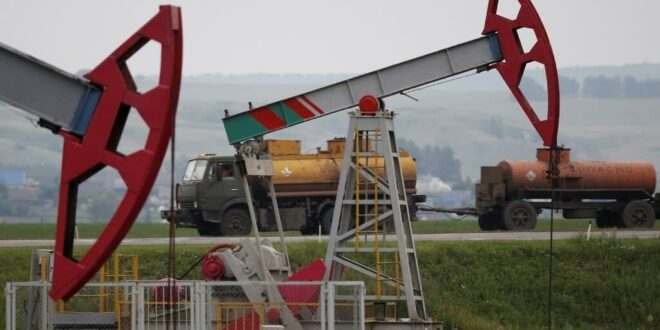Russian companies got far more money from selling the country’s oil than previously thought in the weeks that followed the imposition of a price cap on the nation’s exports, a group of academics said.
The research weakens the idea that the price limits are crushing Moscow’s revenue to fund the war in Ukraine.
Russia’s crude fetched an average of about $74 per bbl in the four weeks that followed the cap, according to calculations by experts including from the Institute of International Finance, Columbia University and University of California. That’s about a quarter above the threshold — $60 per bbl — that the Group of Seven set from Dec. 5.
Their work was based on an analysis of customs’ invoice-level data for the four weeks after the cap was set for crude sales to buyers all over the world, and from all ports and pipelines.
While Russia itself isn’t providing access to such data, their estimates will be met with alarm by governments who’ve argued that measures to cut off the Kremlin’s access to petrodollars has been a big success. Specialist commodity pricing firms said that the country’s flagship crude plunged far below $60 at the point of export in the Baltic and Black seas.
“Our surprising finding of a significant share of Russian crude oil being sold well-above the price cap level of $60 a barrel urgently calls for further investigation of these transactions and reinforces the need for stepped-up enforcement,” the authors said.
The authors — Tania Babina, Benjamin Hilgenstock, Oleg Itskhoki, Maxim Mironov and Elina Ribakova — recommended diligent enforcement of sanctions, to ensure that buyers comply with the restrictions on shipping and insurance services.
Oil exports from Pacific Ocean ports to key destinations like China were at even higher prices, averaging $82 per bbl, according to the research.
Around half of Russian shipments are transported by state-controlled Sovcomflot PJSC or a “shadow fleet” of tankers, and thus not subject to price cap. The rest will rely on western shipping services and therefore subject to the threshold, the report said.
The authors acknowledged that there were some limitations in the customs figures. While the data on individual invoices are unprecedented in the detail offered on Russia’s oil trade, they noted that the timing of payments and in some cases deliveries might have varied from the date of the invoices. Still, they said they were confident that the overall conclusions were valid.
While the price cap was imposed to reduce the flow of petrodollars, another goal was to simultaneously keeping Russian crude in the global market. The upper limit was promoted by the U.S. Treasury among others.
The U.S. has argued that, even if Russian crude does trade above the cap, it is nevertheless giving buyers bargaining power while avoiding a major shutdown of exports that would drive up prices. The data still support that argument because most Russian grades were well below international benchmarks like Brent.
Under the terms of the cap, companies and traders can only access a multitude of western services, especially industry standard insurance, if they purchase Russian crude at $60 per bbl or less. The threshold will be revised every two months.
Russia, which gets around a third of its budget revenues from oil and gas industry, is changing the way it calculates taxes on oil, adopting a narrower discount on the Urals grade used in its assessments.
Changes approved by President Vladimir Putin earlier this week are expected to bring 660 billion rubles ($8.7 billion) to Russia’s budget this year, according to the Finance Ministry’s estimates.

 Iran Energy News Oil, Gas, Petrochemical and Energy Field Specialized Channel
Iran Energy News Oil, Gas, Petrochemical and Energy Field Specialized Channel



